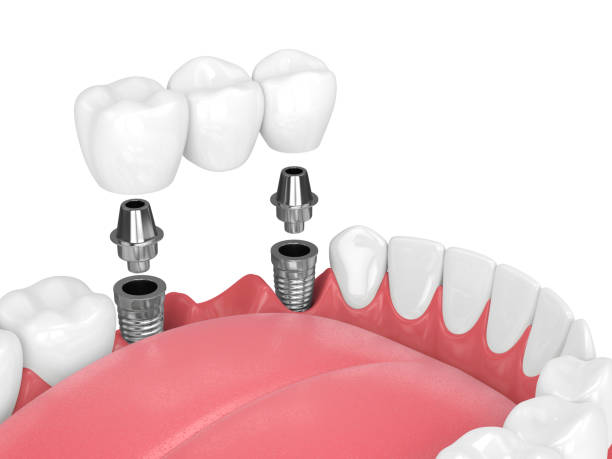Niclosamide for sale is an antiparasitic medication that has been used for decades to treat a variety of intestinal worm infections, particularly those caused by tapeworms (cestodes). It is considered a potent anthelmintic, meaning it is effective at eliminating parasitic worms from the body. This medication is particularly useful in treating infections caused by Taenia species (including Taenia solium, Taenia saginata), Diphyllobothrium latum, and Hymenolepis nana, among others.
This article explores how Niclosamide works to combat intestinal worms, its mechanism of action, the infections it treats, its safety profile, and why it remains a key medication in parasitic disease management.
Table of Contents
ToggleWhat is Niclosamide?
Niclosamide is a broad-spectrum anthelmintic drug that works by targeting and killing various types of parasitic worms, particularly cestodes (tapeworms), in the human gastrointestinal tract. It is often used when other anthelmintic drugs are ineffective or unavailable. Unlike many other antiparasitic drugs, Niclosamide is highly selective for cestodes, which makes it a highly effective and targeted treatment for tapeworm infections.
Niclosamide is typically administered orally in the form of tablets, and the dosage is generally determined based on the specific worm species involved and the severity of the infection. It is often prescribed as a single-dose treatment but may require repeat doses for certain types of infections.
How Niclosamide Works
Niclosamide acts specifically on the metabolism and physiology of parasitic worms. To understand how it works, it’s essential to look at its mechanism of action in the body.
1. Disruption of the Tapeworm’s Energy Production
One of the primary ways Niclosamide works is by interfering with the energy production of the parasite. Tapeworms, like all living organisms, require energy to maintain their structure and carry out essential biological processes. Niclosamide disrupts the worms’ ability to produce energy by inhibiting the mitochondrial function of the worm. The mitochondria, often referred to as the “powerhouse” of the cell, are responsible for generating energy in the form of adenosine triphosphate (ATP).
Niclosamide specifically inhibits the mitochondrial oxidative phosphorylation process in tapeworms. Oxidative phosphorylation is a critical metabolic pathway where cells generate ATP through the consumption of oxygen and glucose. By disrupting this pathway, Niclosamide effectively reduces the tapeworm’s ability to generate the energy needed for survival. This results in the paralysis and eventual death of the parasite.
2. Disruption of the Tapeworm’s Glycogen Metabolism
In addition to inhibiting mitochondrial function, Niclosamide also interferes with the tapeworm’s glycogen metabolism. Glycogen is a stored form of glucose that worms use for energy. Niclosamide impairs the ability of the worm to store and process glycogen effectively, depriving it of an essential energy source. Without a functioning glycogen metabolism, the tapeworm is unable to sustain itself, leading to its death.
This dual mechanism—disrupting both mitochondrial function and glycogen metabolism—contributes significantly to Niclosamide’s efficacy in eliminating tapeworms.
3. Paralysis and Detachment from the Intestinal Wall
Niclosamide also causes a paralytic effect on the tapeworms. It affects the muscular function of the worm, leading to paralysis. This paralysis prevents the worm from anchoring itself to the intestinal wall. Tapeworms have specialized structures called scolex (the head) that allow them to attach to the intestines of their host. Without the ability to anchor themselves, the worms are dislodged from the wall of the intestines.
Once the tapeworms are dislodged, they begin to break apart and are expelled from the body through the feces. This process not only removes the worms but also prevents further infection, as the worms can no longer lay eggs or reproduce.
4. Inhibition of the Tapeworm’s Ability to Absorb Nutrients
Tapeworms absorb nutrients from the host’s intestinal contents across their skin (tegument). Niclosamide also affects the absorption mechanisms of the worm’s tegument, preventing it from absorbing essential nutrients like glucose and amino acids. This starves the parasite, further contributing to its demise. As a result, the tapeworm becomes weakened, malnourished, and eventually dies.
Infections Treated by Niclosamide
Niclosamide is effective against a range of tapeworm infections, which can vary in terms of severity, geographic distribution, and the specific type of tapeworm involved. Some of the most common infections treated by Niclosamide include:
1. Taeniasis
Taeniasis is an infection caused by tapeworms of the Taenia genus. The most common species that infect humans are Taenia solium (pork tapeworm) and Taenia saginata (beef tapeworm). Infected individuals typically ingest the larvae or eggs of the tapeworms from undercooked meat, which leads to intestinal infections.
Niclosamide is one of the most effective treatments for taeniasis, as it targets the adult tapeworms in the intestines, causing them to dislodge and be expelled from the body.
2. Diphyllobothriasis
Diphyllobothriasis is caused by Diphyllobothrium latum, also known as the broad fish tapeworm. Humans can acquire this infection by consuming undercooked or raw freshwater fish. The adult tapeworms live in the intestines, where they can grow to large lengths. Niclosamide is an effective treatment for this infection, killing the tapeworm and allowing it to be excreted from the body.
3. Hymenolepiasis
Hymenolepiasis is caused by Hymenolepis nana (dwarf tapeworm) and is more common in children, particularly in areas with poor sanitation. The infection is typically acquired by ingesting eggs from contaminated food or water. Niclosamide is effective in treating both adult and larval stages of this tapeworm.
Dosage and Administration of Niclosamide
Niclosamide is typically administered as an oral tablet. The standard dosage for treating taeniasis is usually a single dose of 2 grams for adults and 1 gram for children. In some cases, a follow-up dose may be recommended, depending on the severity of the infection and the species of tapeworm involved. The medication is usually taken after a light meal and may be followed by a laxative to help expel the dislodged worms.
Side Effects of Niclosamide
Niclosamide is generally well-tolerated, but like any medication, it can have side effects. The most common side effects include:
-
Gastrointestinal discomfort: This can include nausea, vomiting, abdominal pain, and diarrhea.
-
Headache
-
Dizziness
-
Rash or itching (rare)
Serious side effects are rare, but it is important to follow the prescribed dosage and consult a healthcare provider if any severe reactions occur.
Conclusion
Niclosamide remains one of the most effective treatments for tapeworm infections, particularly those caused by Taenia species, Diphyllobothrium latum, and Hymenolepis nana. By disrupting the parasite’s ability to produce energy, absorb nutrients, and anchor itself in the intestines, Niclosamide leads to the paralysis, dislodging, and eventual expulsion of the tapeworms. This drug continues to be an essential tool in the global fight against intestinal parasitic infections, particularly in areas with poor sanitation and limited access to modern healthcare. While the drug is generally safe, it is important for patients to follow their healthcare provider’s instructions to ensure effective treatment and minimize potential side effects.







0 Comments